
emale-written crime has been leading us down some very dark, twisty alleyways of late. Rather than following in the vein of Agatha Christie’s Art Deco murders, women are opting for something far more ominous: the crime thriller. This trend has been most notably cemented by the successes of Gone Girl (Gillian Flynn) and The Girl on the Train (Paula Hawkins).
Women Are Taught To Fear
So why are women opting for a darker approach to crime? The answer lies in why we have thrived within the genre since it began: the way in which women are socialized. From a young age, women are taught to assume themselves the natural and preferred targets for criminals. In early adulthood, women trade the rosy and secure picture of their hometown for a dangerous place, when we are handed the house key. Somewhat ceremoniously, it is handed over as many parents recite the places to avoid, especially after dark, and recall the fate that awaits—and has famously met—those who ignore the warnings. This parental talk can cause young women to see their hometown as a place of potential danger for the very first time.
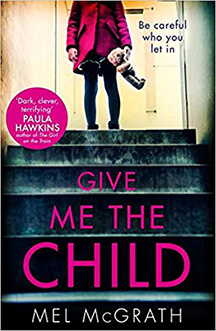
Such normalized threat and intimidation continues into adulthood. It shapes women’s perception of the world as a dangerous place, causing us to picture danger behind cozy facades and “exist in a space of low-level fear.” Not my words, but those of crime writer Mel McGrath (Give Me the Child, The Guilty Party): “When we walk down the street, we’re conscious of who’s behind us, particularly if it’s dark. If there’s a guy loitering, we wonder what he might be doing. When we put our key in the door, we have the momentary thought: Is someone in the house? That sort of chronic, low-level fear is something that women experience in their everyday lives that men simply don’t.”
From being trained to assume danger lurks around every corner, women often mentally author one crime vignette per outing, or at least devise its plot. The more accomplished crime writers among them, such as Mel, “draw on that everyday experience to create suspense and great suspense novels.”
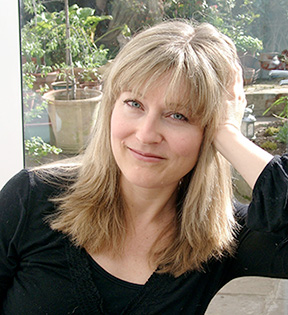
“That sort of chronic, low-level fear is something that women experience in their everyday lives that men simply don’t.”
(Photo of Mel McGrath by Patricia Grey)
Writing Through the Fear
The fears hardwired into the female psyche do more than weave the thread of a crime narrative. This fear is a nervous energy, and it fuels the act of writing the crime novel, an approach exemplified by author Cass Green (Cottage in a Wood, No Good Deed, The Killer Inside). She writes crime to “explore [her] fears in a controlled way. It’s a means of stepping to the brink of danger, of looking at it but being able to safely walk away.” The confrontation and outworking of Cass’s anxieties take place within the confines of the novel itself and become etched on the pages. Her readers are immersed in her fears without the slightest detachment but also without the writer’s safety net. Many readers of In a Cottage in a Wood felt “compelled to put the lights on,” a response that shows just how women’s everyday existence can be so filled with fear.
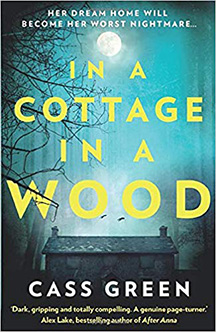
While Cass writes crime to confront the fears society expects women to feel and that many women do feel, Mel McGrath finds it a useful means of venting and engaging in the “feelings that women are not encouraged to express openly. These include outrage and anger and also vulnerability, both physical and psychological. Crime [novels] allows women to experience these in a safe environment” and satisfy a lifetime’s curiosity through the written word.
Crime writers devise a fearsome setting to enter a world that has been closed to them. By describing and evoking its eerie atmosphere, authors can survey it, take it in, and delight in the resulting adrenalin rush rather than just running to safety. From the endless horror stories, they concoct a detailed portrait and finally “see” the long-hidden villain.
Crime fiction grants women certain permissions that real life often denies. It allows us to be the source of fear and to intimidate men. By drawing on intimidation, taunts, and threats, women crime writers avenge a lifetime of being controlled by fear and everyday horror stories. In the same way that Frankenstein’s monster devours its creator, the female crime novelist stupefies those who have long intimidated her. Not only does she refuse to be silenced, she turns the horror stories used to control her into an alloy of suspense more frightening than her intimidators could expect or imagine. As well as an act of revenge, female-written crime is a profound act of defiance.
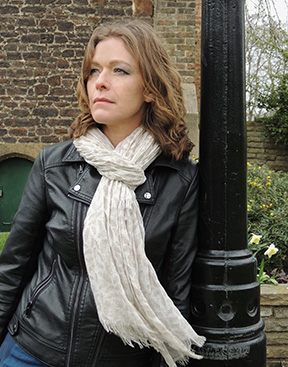
“The things that are scary are things that give you a sense of unease when you don’t know what the scary thing is—a danger that you cannot quite identify.”
(Photo of Cass Green)
A World Stacked Against Women
The alternative world of opportunity that exists in crime fiction highlights what Mel McGrath calls “a world unfairly stacked against women.” This extends to the law and government services, systems that superficially cater to all—but in reality, can often let women down. We now know routine sexual harassment, sexual bullying, and abuse have been institutionalized for some decades. In the same way that a predator is all the more dangerous when he or she comes across warm and friendly, it is most unnerving that the services designed to ensure public safety have been doing anything but for half the population. This theme is a centerpiece of UK TV favorite, Prime Suspect (1991-2006). Detective Chief Inspector Jane Tennison (Helen Mirren) competes against her own workplace sexism and her male colleagues’ apathy for the female victims the Public Purse pays them to seek justice for. And viewers wonder why she has a drinking problem.
An acquired nose for danger means many women are able to predict what could go wrong in certain situations. Similarly, experience of falling through the cracks in a system alerts them to systemic flaws vulnerable to manipulation. These factors give women an instinct to find holes in something that is generally unchallenged or supposedly watertight. Cass Green often begins a book with these thoughts and the question, “What would it be like if...?” Such a mentality enables women to think like a criminal mastermind as well as a victim and equips us perfectly for writing crime thrillers.
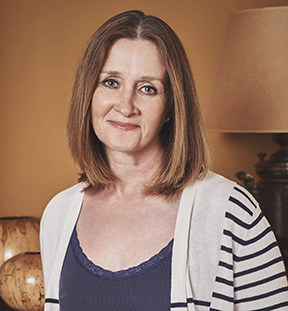
“I found some very, very dark material, and I was not on the dark web; this was standard internet.”
(Photo of Sharon Bolton by Roy J Baron)
The Dangers of the Internet
The thrillers of Sharon Bolton and Angela Clarke take place online. The action condensates from the flaws in the Internet and social media that were not foreseen in the excitement of their arrival and the new opportunities they would create. The repercussions of these flaws have only become more severe, as we have become increasingly reliant upon the online space. Taunts. Losing control. Manipulation. Gaslighting. These are fears that everyone has, and like every other aspect of human life, manifest themselves online.
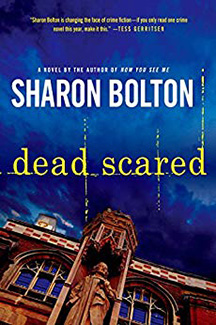
Sharon’s thriller Dead Scared is the second in her (Detective) Lacey Flint series and was published in 2012. It deals with “young women who are driven to despair and eventually suicide by people whom they’ve never met who are trolling them online.” She describes it as “one of the most disturbing books I’ve ever had to research.” Sharon began researching abusive online content before the UK regulation measures in 2013, before Twitter’s “report abuse” button, and even before mainstream awareness of the issue. It was a time when “social media was still quite new and the idea of trolling was almost unheard of. The ‘trolls’ were still under the bridges.”
But being of the sex that is systematically disadvantaged and innately fascinated by human fears, Sharon was ahead of the curve. She knew where to look for shortcomings in the unregulated web and “found a disturbing amount of material about suicide. I found websites that encouraged people to commit suicide, that actually gave practical help on taking one’s own life. I found some very, very dark material, and I was not on the dark web; this was standard internet.”
Crime writers featured:
Mel McGrath is an Essex girl who cofounded the all-female crime writers group Killer Women. She is the author of the psychological thriller, Give Me the Child, and has written for The Wall Street Journal and a number of UK publications. The New York Times called her ”wickedly talented.”
Caroline “Cass” Green’s debut adult novel, The Woman Next Door, was a number one e-book bestseller and her second, In A Cottage, In A Wood, was a USA Today bestseller. Don’t You Cry was her third standalone thriller. She is also an award-winning author of fiction for young people.
Sharon Bolton grew up in Lancashire. Her first novel, Sacrifice, was voted Best New Read by Amazon UK, while her second, Awakening, won the 2010 Mary Higgins Clark Award in the US. She has been shortlisted for several awards, including Theakston’s Prize for Best Thriller.
Angela Clarke is the Sunday Times bestseller of the Social Media Murders series. Her debut, Follow Me, was named Amazon’s Rising Star Debut of the Month, longlisted for CWA’s Dagger in the Library, and shortlisted for the Good Reader Page Turner Award. A sufferer of EDS III, Angela is passionate about bringing marginalized voices into publishing.
Perhaps the maternal responses hardwired into all mammalian females enable women to envisage problems impacting the most vulnerable. Sharon “became very interested in this idea that people could be targeted and pursued online by faceless villains whom they would never come into contact with. On the one hand, you could argue that there’s no danger because these people are probably just operating from their mother’s basements. But on the other, you cannot quite take that for granted.”
This unsettling thought is exacerbated by the fact there is no way to find out. There is, for example, no online database of known troll accounts and recorded cases. As the troll’s favorite victim, many women are haunted by even more sinister unconfirmed fears and the suggestion, rather than the presence, of danger. This is something Cass Green draws on. For her, fear is “not horror. The things that are scary are things that give you a sense of unease when you don’t know what the scary thing is—a danger that you cannot quite identify.”
Sharon Bolton’s novel explores this by confronting the “real sense of menace that comes from the unseen killer or stalker.” This is something Angela Clarke is all too familiar with. It even triggered her move into the crime genre.
Angela recounts that “after I published a couple of articles talking about feminism, I was trolled. I was sent extremely graphic and violent sexual threats, threats of murder and of rape.” In response, she “hunted down various accounts. One [troll] was a schoolteacher and a number seemed to have daughters, which I found quite surprising. It really opened my eyes up to the darker side of the internet and in particular, why people troll.”
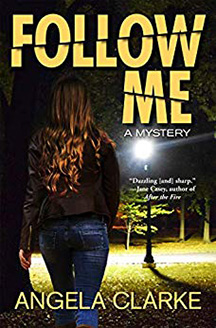
The result was Follow Me, the first in the Social Media Murders trilogy. The narrative unfolds around “a serial killer who tweets clues as to who his next victim might be. Some of the messages that he and his trolling friends send are word for word the same as were sent for me.” Using the genuine rape and death threats that terrorized Angela gives the supposedly nebulous online comments and “empty” threats some very aggressive teeth. In so doing, Angela has shown that being trolled and the fear it induces is a reality for “so many people, often women. It’s what they’re up against when they go online and raise their head above the parapet to speak their opinions on things.”
Far from running to the defense of damsels in e-stress, the legal system often thwarts even the ability to accurately explain what trolling is. It’s often mistaken for internet users’ oversensitivity to those who disagree with them in a debate of some kind. The full extent of online abuse remains unknown to so many, simply because the mainstream media automatically censors content of that nature. This dilemma informed Angela’s decision to “use a direct relay of the Tweets that I had been sent. Luckily, in books, you can use bad language if you want to. It’s not for sensationalist or entertainment reasons; it’s an enlightenment exercise. I cannot say on radio or television the words that were sent to me, not even after the nighttime watershed. That alone tells you how wrong this is.” Anyone who finds the messages Angela received shocking should remember her use of them in the books is “minimal.”
The Social Media Murders trilogy leaves us with an ominous hypothesis from Angela: “As technology advances, is it going quicker than we can develop social etiquettes, social norms, and even laws?” Reporting online abuse is far from instant. The police must initially decide if the content is malicious or harassment. Disagreements can occur between receiving officers and VAWG (Violence Against Women and Girls) teams because of subjectivity. The inevitable delay in action creates ample opportunity for subsequent threats to be sent and intimate photos and videos to be viewed countless times on websites. It does seem that we rely on outdated legislation designed for the paper communications they were written for.
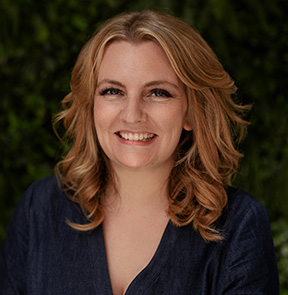
“As technology advances, is it going quicker than we can develop social etiquettes, social norms, and even laws?”
(Photo of Angela Clarke)
Exploring Law Enforcement and Prisons
Sharon Bolton and Angela Clarke teach us it is not only the online life, new and constantly redefining itself, that fails to guarantee women’s wellbeing. Their latest crime thrillers expose the problems faced by women on either side of a police desk: as both investigators and the accused.
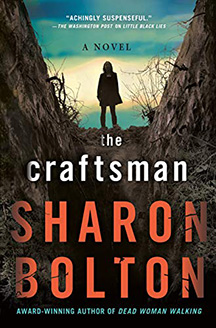
Sharon’s thriller The Craftsman was motivated by her own theory that “it’s society that makes witches, not the women themselves. I don’t mean witches in the sense of old women who throw eyes of newts into cauldrons and fly around on broomsticks. Witches are women who are ostracized by the communities that they live in.” Sharon loves the Gothic, the idea and portrayal of humans behaving in a manner more typical of demons and ghouls. Set “very close to Pendle Hill, the location for the witch trials of the 1600s,” The Craftsman explores “what makes some women stand out from the crowd and what it is about the crowd that makes them turn on those women” even when they are committed to making their community safer.
The protagonist is “a young policewoman who is pursuing a very unpleasant serial killer. She catches him, and it makes her career. But the impact upon her own psyche is formidable.” Rather than being commended and celebrated as the “first female police constable in the Lancashire police force, she’s up against a barrier of suspicion and misogyny right from the very beginning. She finds herself battling her own colleagues as well as the crooks and becomes a witch. They turn upon her during the course of the book.”
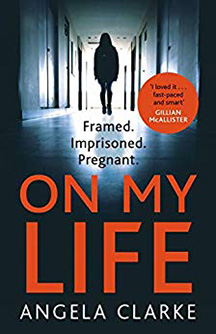
The protagonist of Angela’s new thriller, On My Life, is Jenna, who is a witch in Sharon’s sense of the word. Or more accurately, rendered one when she is framed for a murder. After being sentenced for a crime she didn’t commit—echoes of witch trials—she feels the full weight of a crowd turned against her when she discovers she is pregnant.
As with Follow Me, On My Life was inspired by underreported difficulties faced by women in contemporary society. Its jumping off point is the research of Dr Laura Abbott, who found the penal system to be failing pregnant inmates in some UK prisons. As public institutions, most people assume prisons neutral and fully accommodating, but the reality is far from it. In most cases, midwives are not based in prison and never on duty overnight, even though births in early hours are far from uncommon. Prison staff are also not trained to identify signs of labor nor for emergency deliveries. Some inmates have recounted not being believed when they reported their labor had started. The need to appoint an escorting prison officer for the transfer to hospital can cause additional delays. This is all highly dangerous, even more so considering the many common factors that can produce an early labor. As a result, women have been giving birth in their cells without a midwife. Though not true of all births behind bars, a generalized disregard for prison pregnancy suggests it ominously inevitable that some would go through an unassisted labor. Insufficient provisions of medical equipment and advice, as well as supplementary sustenance, have also been reported. Although an estimated six hundred to one thousand inmates are pregnant at any one time, the exact numbers are not known. These statistics are not even collected, which alone signifies a penal and justice system used, observed, and paid for by all—but designed for men.
A trend of overlooking the needs of pregnant inmates punishes the character of Jenna far beyond her “crime” in Angela’s book. Subjected to societal “othering” by a system making little attempt to recognize her, Jenna must answer the charge of simply being a woman. The crowd turning against her is not only the one outside the courtroom at her trial, but a public institution she has contributed to through taxation. It rejects her because her basic needs are an inconvenience.
Drawing on the hypocrisy of the legal and justice system enables women crime writers to thicken and darken the plot of the thriller. But what they show is real life for so many women in 2019, like inmates who are not given menstrual products: safeguarding institutions are operating with inhumane apathy towards women. The gothic is actually here, in the real world. It is systemic. We may not even notice because it is so engrained. Exposing this enables women crime writers to further unsettle the reader: the fate of the “witches” could be our own. Anyone can fall on hard times—could we be denied the basic help we needed? Getting us to think in these terms enables women crime writers to push readers further outside their comfort zone. Female crime novelists can torment us simply with women’s daily realities.
*
The crime novel is the perfect platform for exposing the public institutions and legal systems that do not align with women’s wellbeing. Plus, drawing on a lifetime of normalized tension and horror stories enables female authors to immerse readers in the fear they may feel on a regular basis and point out the organizations that may be failing them. Female-written crime is, therefore, not only compelling reading but also a social critique necessary to effect change and improve both attitudes and women’s services. And that is why women crime writers are killing it.
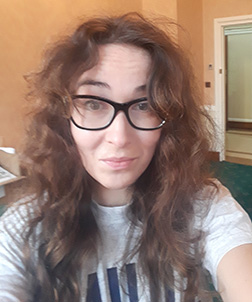
Rosie MacLeod is a London-based translator, interpreter, and increasingly,- writer and radio host. She has written for Drunk Monkeys, World Literature Today, and the Journal of Austrian Studies. She is the host of “What They Don’t Tell You About the EU” on East London Radio. Visit her website at RosieMacLeod.com.